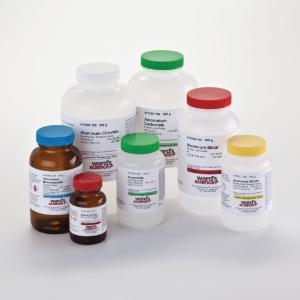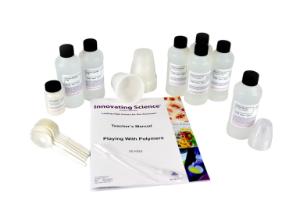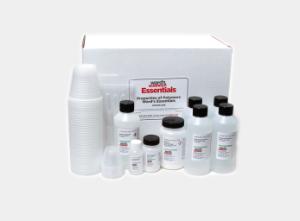Cross-Link Science and Fun with this Free Joke Juice Activity
A quick and easy activity illustrating the effect of cross-linking on a polymer
Fill form to unlock content
Error - something went wrong!
Get Your Free Activity
You're in! Thanks for subscribing.
All Grades
Mr. Spock may have introduced the world to the sci-fi planet Vulcan, but in 1839, it was chemist Charles Goodyear who developed the real-world vulcanization process. When Goodyear accidentally placed a mixture of rubber latex, sulfur, and white lead on a hot stove, he began a long journey into rubber cross-linking research.
Cross-linking involves the formation of bonds that tend to link together large molecules so that they are no longer free to slide past one another.1 This phenomenon makes an excellent introduction to chemical reactions for your class. Polymers and cross-linking give students of all ages a chance to participate in ooey-gooey hands-on activities like making slime or the Joke Juice activity that you can download for free above.
In polymer chemistry, "cross-linking" refers to the use of cross-links to cause a change in the polymers' physical properties. By selecting the monomer and controlling the amount of cross-linking, chemists can pick and choose the properties of polymers they synthesize and develop exciting new polymers. The list of products that have been discovered is endless, like Goodyear's vulcanized rubber, nylon, plastics (vinyl, polyethylene, PVC pipes) chewing gum, starch, epoxy glue, silicone heart valves, Teflon-coated cookware, and paint, to name a few.
How does cross-linking increase the strength of polymers?
Goodyear didn’t realize it at first, but the sulfur in his mixture formed bridges, or cross-links, that tied all the polymer chains in the rubber together. Because they are tied together, even when the rubber gets hot, they can't flow past each other, nor around each other. That’s why it doesn't melt when it’s hot. Also, once all the polymer molecules are tied together, they’re hard to break apart. That’s why the vulcanized rubber doesn't get brittle when it gets cold.
Cross-linking makes rubber and plastic stronger, but there is a downside. Because cross-linked materials don't melt, it is tough to recycle them. Manufacturing researchers now look for ways to create cross-links that can be reversed. Thermoplastic elastomers (TPEs), for example, were developed using reversible cross-links. Because of that, they are considered more environmentally sustainable than materials made with thermoset polymers—permanent cross-linking.2
Download the Joke Juice activity; it’s a fun way to illustrate the effects of cross-linking on a polymer. Borax is used as the cross-linking agent; it links the long chains of guar gum in a web, making it harder for them to move around. As a result, the cross-linked chains are stronger and denser, creating a neat (er…or messy if they’re not careful) mixture your students will enjoy observing.
Referrences: 1. Khanh Nguyen, Massachusetts Institute of Technology 2018: The effects of slime composition and strain rate on slime stretchiness. 2. Recycling Today: Case Western researchers develop chemical process to recycle thermoset polymers.
Recommended products:
[StartProductBlock]

Guar Gum
Solubility: Water. Synonyms: Guar Flour. Shelf Life: 36 months
[EndProductBlock]
[StartProductBlock]

Playing With Polymers Lab Activity
Students make slime and polymer worms to explore polymers and their importance in our everyday lives (specifically) plastics.
[EndProductBlock]
[StartProductBlock]

Ward's® Essentials Properties of Polymers Lab Kit
Students will create polymer worms, slime, and snow as they explore the differences between thermoplastic and thermoset polymers. Students will also investigate the properties of various crosslinked, superabsorbent polymers.
[EndProductBlock]
